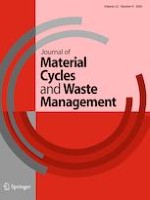11.02.2020 | ORIGINAL ARTICLE
Combustion characteristics of solid refuse fuel derived from mixture of food and plastic wastes
Erschienen in: Journal of Material Cycles and Waste Management | Ausgabe 4/2020
EinloggenAktivieren Sie unsere intelligente Suche, um passende Fachinhalte oder Patente zu finden.
Wählen Sie Textabschnitte aus um mit Künstlicher Intelligenz passenden Patente zu finden. powered by
Markieren Sie Textabschnitte, um KI-gestützt weitere passende Inhalte zu finden. powered by
